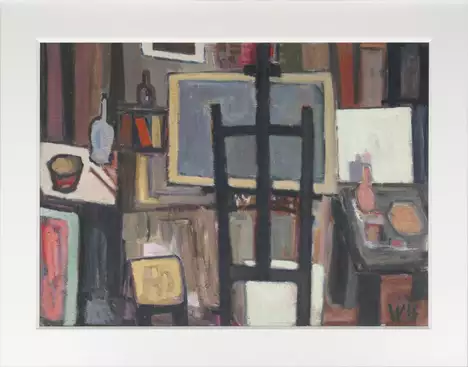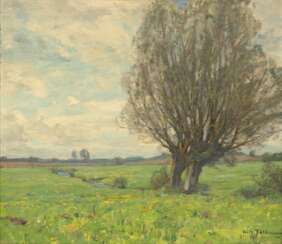k.u.k. helm



Johann König was a German painter. The son of a Nuremberg goldsmith, König was a follower of Adam Elsheimer. He is known today primarily because of his very finely painted copper panels.










Helmut Pfeuffer is a German cavalry artist.
He studied painting at the academies of fine arts in Nuremberg and Stuttgart. He is known for his landscapes and figurative abstract paintings.


Wilhelm von Kobell was a German painter of the first half of the 19th century. He is known as a landscape painter, animalist and battle painter.
Von Kobell initially produced landscapes and animal paintings, but later focused mainly on battle painting. He visited Vienna and Paris between 1809 and 1810 to study this genre. His battle paintings, based on extensive research, are characterized by striking realism. They are important for the study of military history.


Heinrich Christian Wilhelm Busch was a German humorist, poet, illustrator, and painter. He published wildly innovative illustrated tales that remain influential to this day.
Busch drew on the tropes of folk humour as well as a profound knowledge of German literature and art to satirize contemporary life, any kind of piety, Catholicism, Philistinism, religious morality, bigotry, and moral uplift.
His mastery of drawing and verse became deeply influential for future generations of comic artists and vernacular poets. Among many notable influences, The Katzenjammer Kids was inspired by Busch's Max and Moritz. Today, the Wilhelm Busch Prize and the Wilhelm Busch Museum help maintain his legacy. The 175th anniversary of his birth in 2007 was celebrated throughout Germany. Busch remains one of the most influential poets and artists in Western Europe.




Wilhelm Imkamp was a German painter and a student of the Bauhaus and is one of the most important abstract painters of the post-war period in Germany.
Even though Imkamp made over 500 portraits in his lifetime and thus secured his income for several years of his life, abstract painting is and remains the core of his work. His paintings were created without sketches and preliminary studies, he always painted several pictures at the same time and let a composition emerge in many individual steps from the interaction of colour and form alone. Impressions from nature and music were his sources of inspiration, which played a part in the creative process, but in the end a completely new world of images emerged, on the basis of which the picture titles were also found. Imkamp's work is clearly recognisable as a Bauhaus student, strongly influenced by Wassily Kandinsky's colour compositions, Paul Klee's narrative span and Lyonel Feiniger's structured use of space. Over the years, however, he developed a very independent artistic position among the students of the Bauhaus.




Ernst Wilhelm Nay was a German painter and graphic designer of classical modernism. He is considered one of the most important painters of German post-war art.


Helmut Sturm was a German painter.
From 1952 to 1958, he studied at the Akademie der Bildenden Künste, Munich. After this he joined Heimrad Prem, Lothar Fischer and Hans-Peter Zimmer in founding Gruppe SPUR, which in 1959 entered the Situationist International.
From 1980 to 1982, he was guest professor at the Hochschule der Künste, Berlin, taking over Hann Trier's class. He continued to exhibit across Germany and from 1985 to 1998 was professor at the Akademie der Bildenden Künste, Munich.


Wilhelm Feldmann was a German landscape painter, etcher, and lithographer.
In 1887, he received an award from the Dresden Watercolor Academy. Two years later, he was presented with the Menzel Foundation award. The Berlin Academy gave him a special award in 1890, for his etching of the Rudelsburg.
From 1890 to 1902, he worked in Berlin, as a free-lance landscape artist and etcher. He was awarded a small gold medal at the Große Berliner Kunstausstellung of 1895.
The Lüneburg Heath is a recurring motif in his works. By the 1900s, he was the best known painter of heath landscapes.


Heinrich Wilhelm Trübner was a German realist painter of the circle of Wilhelm Leibl.


Wilhelm Kaufmann is an Austrian artist who has been called the master of the moment.
He studied at the Imperial Royal Academy of Fine Arts, then worked as a painter and track and field athlete at the same time. Kaufmann used color dynamics to masterfully depict momentary scenes of athletes' movements during competitions. He also painted colorful still lifes, landscapes and portraits.
Wilhelm Kaufmann was a member of the Professional Association of Austrian Visual Artists, the Sonderbund of Austrian Artists, the Vienna Art Association and the Vienna Hagenbund, the Vienna Secession and the Vienna Society of Artists, Künstlerhaus.


Ernst Wilhelm Nay was a German painter and graphic designer of classical modernism. He is considered one of the most important painters of German post-war art.


Ernst Wilhelm Nay was a German painter and graphic designer of classical modernism. He is considered one of the most important painters of German post-war art.


Wilhelm Imkamp was a German painter and a student of the Bauhaus and is one of the most important abstract painters of the post-war period in Germany.
Even though Imkamp made over 500 portraits in his lifetime and thus secured his income for several years of his life, abstract painting is and remains the core of his work. His paintings were created without sketches and preliminary studies, he always painted several pictures at the same time and let a composition emerge in many individual steps from the interaction of colour and form alone. Impressions from nature and music were his sources of inspiration, which played a part in the creative process, but in the end a completely new world of images emerged, on the basis of which the picture titles were also found. Imkamp's work is clearly recognisable as a Bauhaus student, strongly influenced by Wassily Kandinsky's colour compositions, Paul Klee's narrative span and Lyonel Feiniger's structured use of space. Over the years, however, he developed a very independent artistic position among the students of the Bauhaus.


Wilhelm Imkamp was a German painter and a student of the Bauhaus and is one of the most important abstract painters of the post-war period in Germany.
Even though Imkamp made over 500 portraits in his lifetime and thus secured his income for several years of his life, abstract painting is and remains the core of his work. His paintings were created without sketches and preliminary studies, he always painted several pictures at the same time and let a composition emerge in many individual steps from the interaction of colour and form alone. Impressions from nature and music were his sources of inspiration, which played a part in the creative process, but in the end a completely new world of images emerged, on the basis of which the picture titles were also found. Imkamp's work is clearly recognisable as a Bauhaus student, strongly influenced by Wassily Kandinsky's colour compositions, Paul Klee's narrative span and Lyonel Feiniger's structured use of space. Over the years, however, he developed a very independent artistic position among the students of the Bauhaus.


Wilhelm Feldmann was a German landscape painter, etcher, and lithographer.
In 1887, he received an award from the Dresden Watercolor Academy. Two years later, he was presented with the Menzel Foundation award. The Berlin Academy gave him a special award in 1890, for his etching of the Rudelsburg.
From 1890 to 1902, he worked in Berlin, as a free-lance landscape artist and etcher. He was awarded a small gold medal at the Große Berliner Kunstausstellung of 1895.
The Lüneburg Heath is a recurring motif in his works. By the 1900s, he was the best known painter of heath landscapes.




Friedrich Wilhelm Kuhnert was a German painter, author and illustrator, who specialized in animal images. After illustrating the books of Alfred Brehm, he travelled to German East Africa to observe animals in their habitat and produced numerous paintings that defined Africa for many Germans of the period.
































































